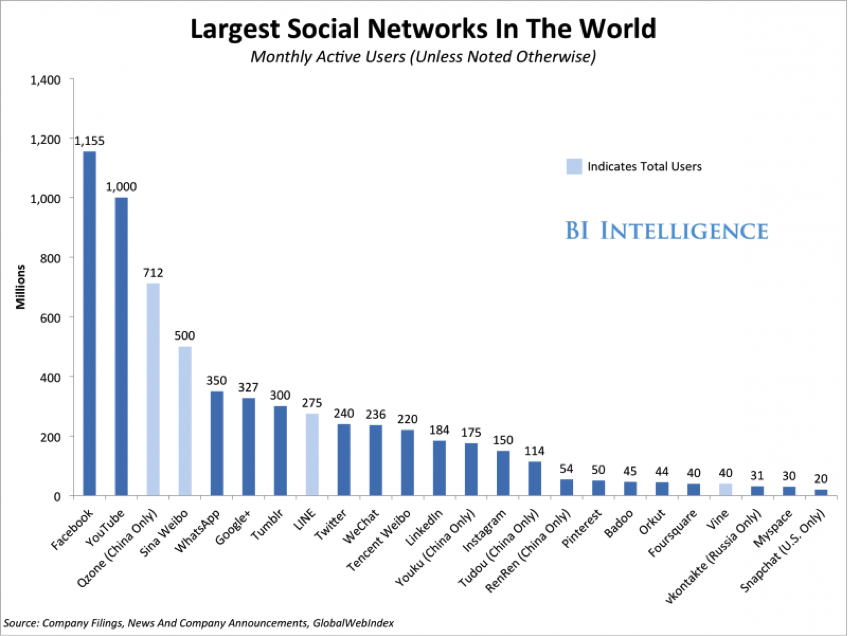Authors
Rajendra Akerkar, Christian Reuter, Massimo Cristaldi, Thomas Ludwig, Andrew Muddiman, Federica Toscano, Federico Sangiorgio
Abstract
In this task a technical analysis of how EmerGent would interact with various Online Social Networks (OSN) will be performed. We focus on those with the highest active user numbers. The identification of the systems is based on the MAU-Value (Monthly Active Users), which counts unique users over 30 days. The MAU-Value is an approximate value to analyze the intensity of use. There is no clear definition of how an “active” user is characterized. Basically, a user is considered to be active if they are unique and have logged on to the system at least once in the month. [Ball13] shows the numbers of the MAU-Value in 2013 for the largest social networks, as well as the distance between the values of the individual systems.

The process of the increasing usage of social media will continue in 2014 Stat14]. In the context of EmerGent the focus of social media is only on systems which are well-known in Europe. An additional restriction is the minimum limit of the MAU of 100 million. This will provide a view on the most used media. This results in the following list:
- Facebook (1.15 billion)
- YouTube (1 billion)
- WhatsApp (350 million)
- Google+ (327 million)
- Tumblr (300 million)
- Twitter (240 million)
- LinkedIn (184 million)
- Instagram (150 million)
Purpose of the Document
The focus of the Task 3.3 will be on the continuous analysis of social media in emergencies in order to identify the potential of new communication media at all phases in the EMS. This analysis is an important precondition for the definition of target social networks and for the definition of the needed API for accessing data streams.
In this regard, the main purpose of this document is to analyse:
- how to interact with users’ profiles taking into account user privacy issues (e. g. access to private data streams) and technical limitations of each social network.
- how to provide the means for supplying to citizens targeted information both on social networks applications and on the mobile EmerGent app.
- how to interface the mobile EmerGent app to offer citizens novel methods for capturing and sharing relevant information for EMS, e.g. audio, photo or video.
Therefore we will first review interaction with user profiles to understand how selected Online Social Networks (OSNs) implement privacy and data protection (Section 2). Then we will review technical shortcomings of existing social networks (Section 3). Further we will review design patterns for citizens targeted information (Section 4). Finally we will analyse an interface for the mobile EmerGent apps (Section 5). Finally we will summarize our findings.
D3.3 provides insights into the technical analysis of social media in emergencies; this includes:
- a review of different OSN’s policies for both end users and developers (Section 2)
- characterization of technical limitations and potentials of existing social networks (Section 3.2)
- design issues based on existing limitations (Section 3.3)
- a situation aware design in mobile apps (Section 4.1)
- a useful overview of strategies for design patterns and interaction design (Section 4.3)
- a constructive discussion on capturing and sharing relevant information for EMS using OSN (Section 5.2)
- the need to provide direct communication channels between the citizens and EMS (Section 5.3).
This analysis will, in some measure, lead to define the requirements for the Project.
